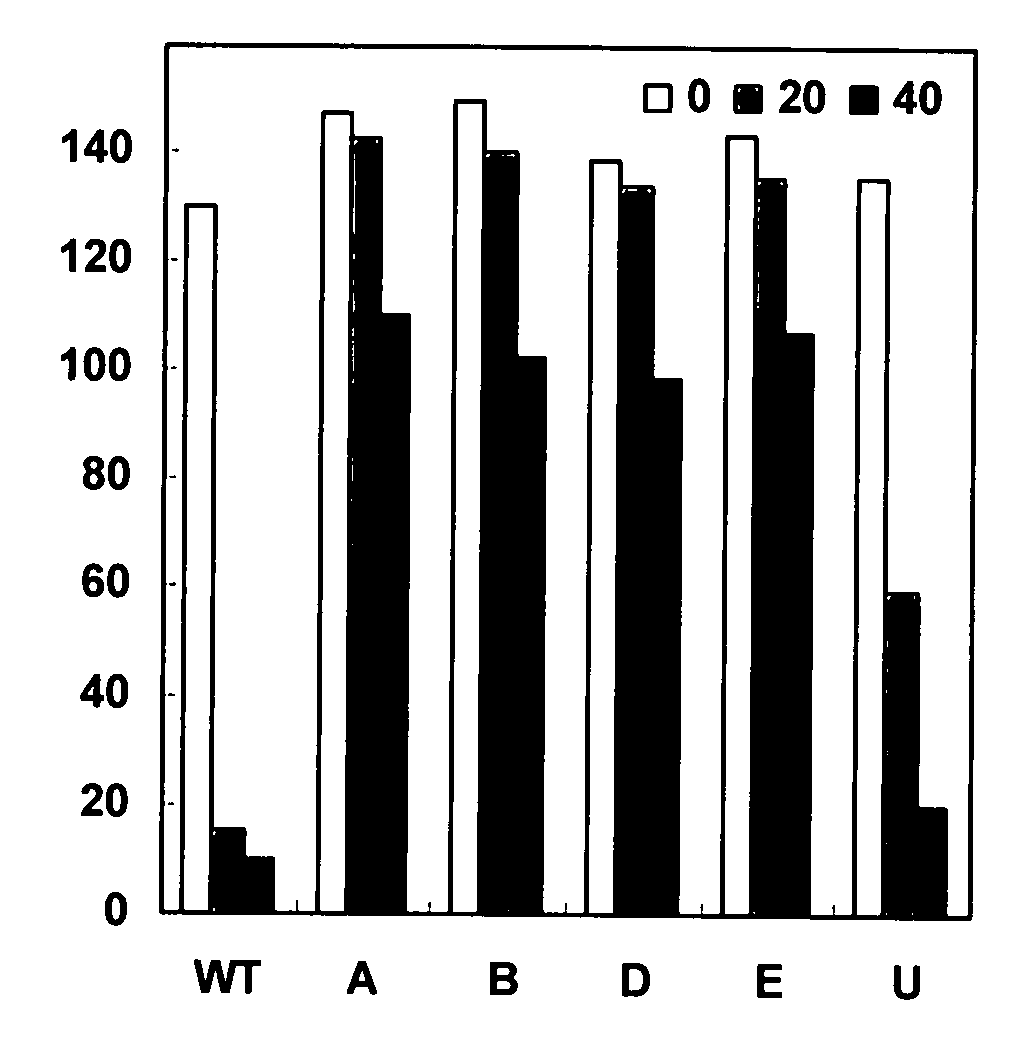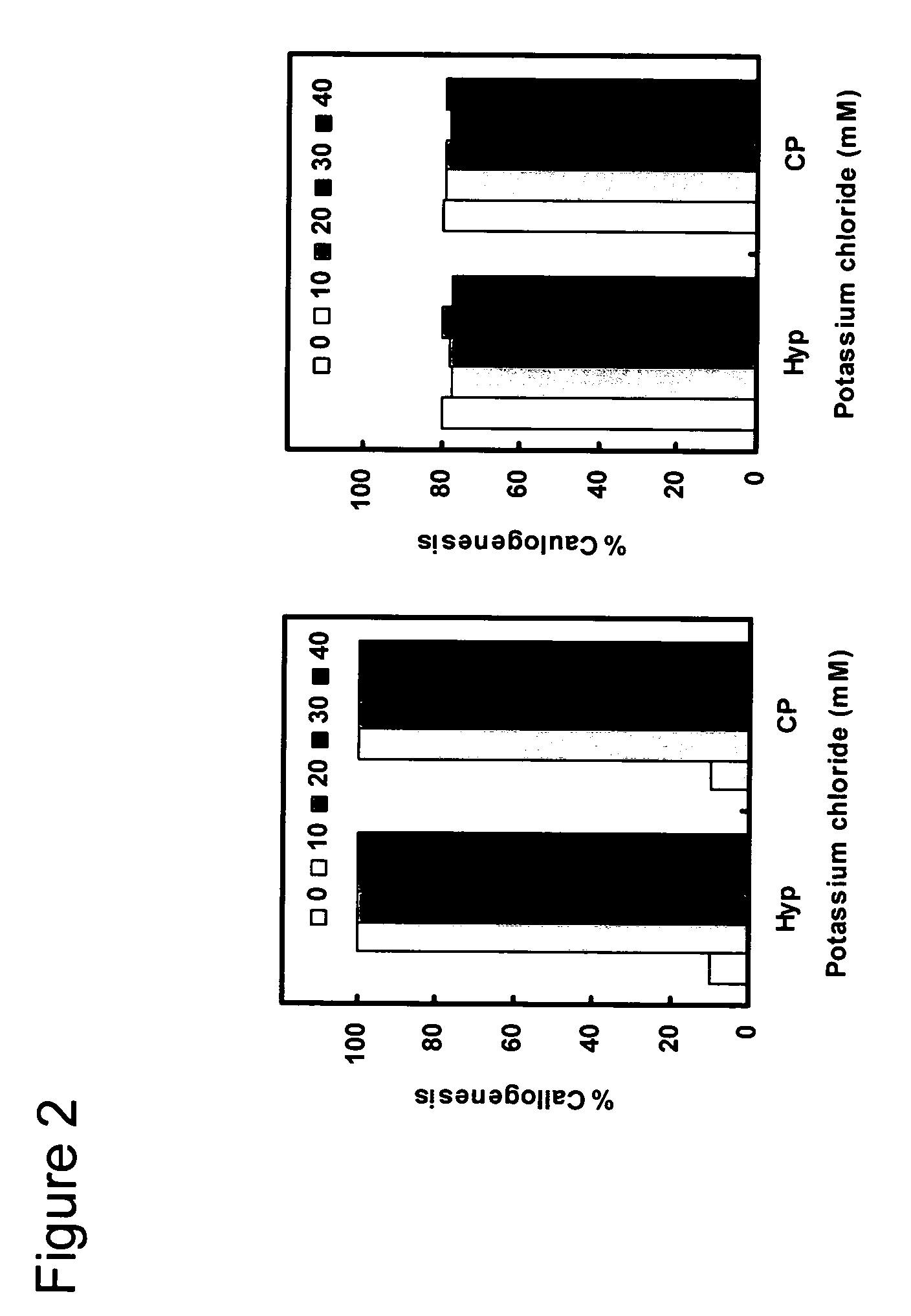Selection marker system and method for screening a choline tolerant plant cell
a plant cell and choline tolerant technology, applied in the field of selection marker systems and screening methods, can solve the problems of ecological disturbance, ineffective use of antibiotics in medicine,
- Summary
- Abstract
- Description
- Claims
- Application Information
AI Technical Summary
Benefits of technology
Problems solved by technology
Method used
Image
Examples
Embodiment Construction
[0026]Preferred embodiments of the present invention will be described in further detail below.
[0027]In a preferred embodiment of the present invention the choline concentration in the medium is up to approx. 60 mM, preferably 5 to 60 mM, more preferably approx. 10 to 40 mM, even more preferred approximately 20 to 40 mM, even more preferred approx. 30 to 40 mM, most preferred approx. 40 mM. It has been shown that plants comprising an exogenously derived nucleic acid sequence coding for choline oxidase, choline monooxygenase and / or choline dehydrogenase can survive in a medium containing choline concentrations which are lethal to the wild type of plant.
[0028]Therefore, the selection marker system is a positive selection marker system, which is ecologically friendly and can be used in the environment without the disadvantages of environmental systems of the prior art.
[0029]The nucleic acid sequence coding for choline oxidase is preferably isolated from Arthrobacter sp. Choline monooxy...
PUM
| Property | Measurement | Unit |
|---|---|---|
| Volume | aaaaa | aaaaa |
| Volume | aaaaa | aaaaa |
| Volume | aaaaa | aaaaa |
Abstract
Description
Claims
Application Information
 Login to View More
Login to View More - R&D
- Intellectual Property
- Life Sciences
- Materials
- Tech Scout
- Unparalleled Data Quality
- Higher Quality Content
- 60% Fewer Hallucinations
Browse by: Latest US Patents, China's latest patents, Technical Efficacy Thesaurus, Application Domain, Technology Topic, Popular Technical Reports.
© 2025 PatSnap. All rights reserved.Legal|Privacy policy|Modern Slavery Act Transparency Statement|Sitemap|About US| Contact US: help@patsnap.com



